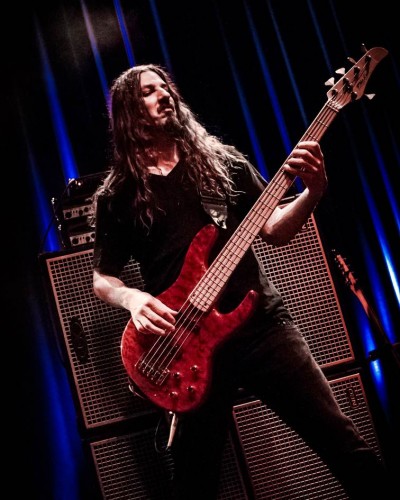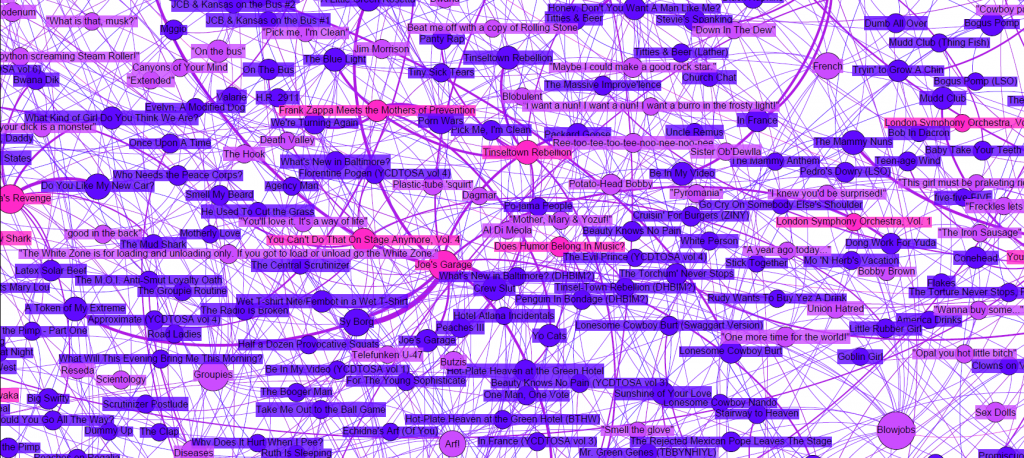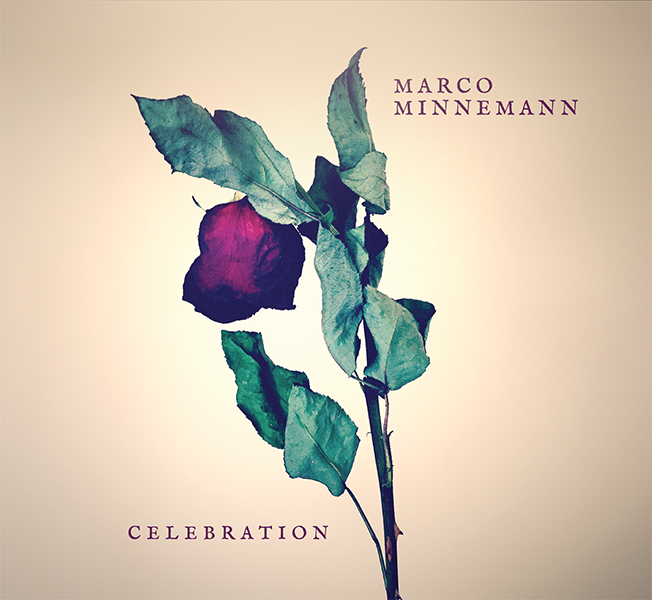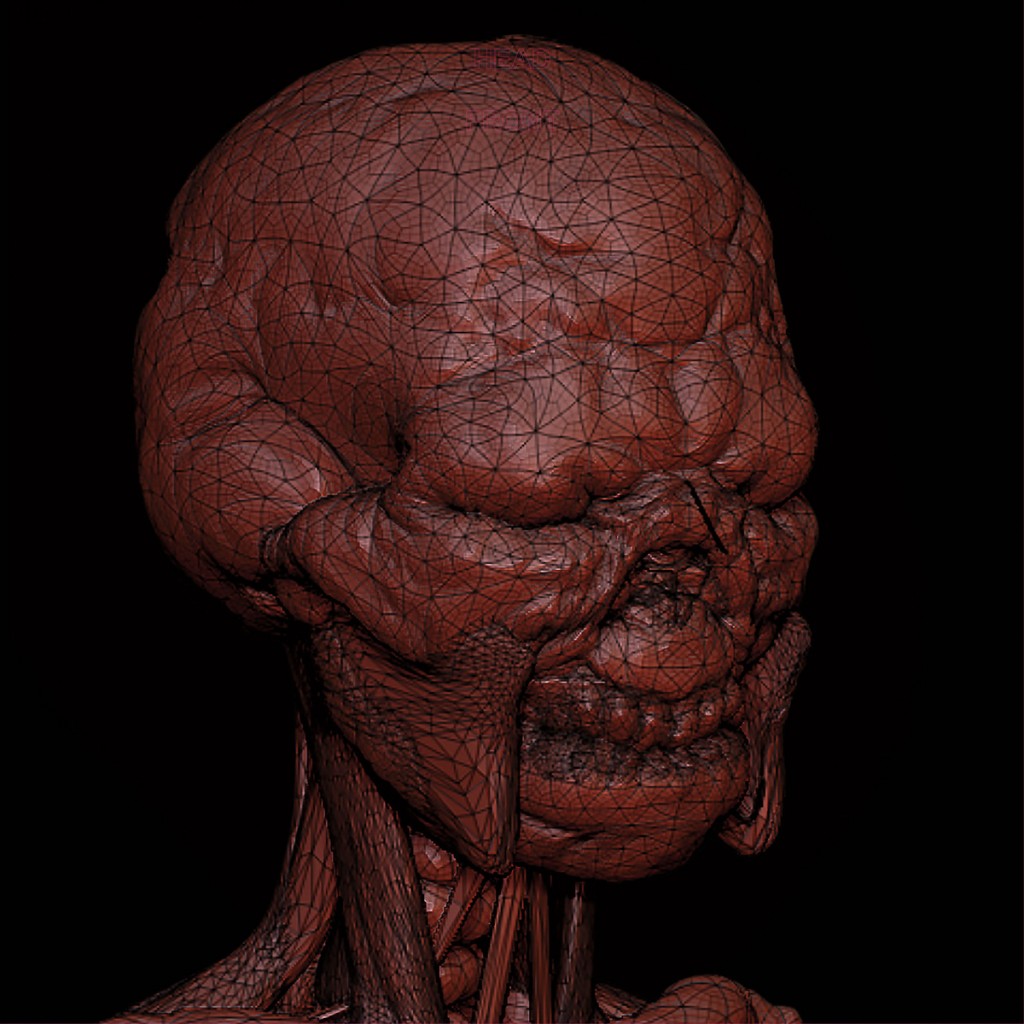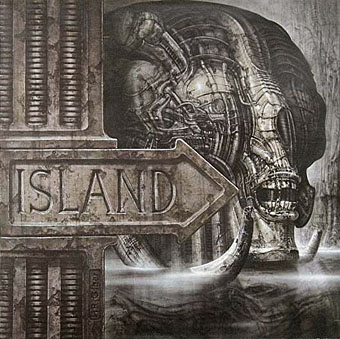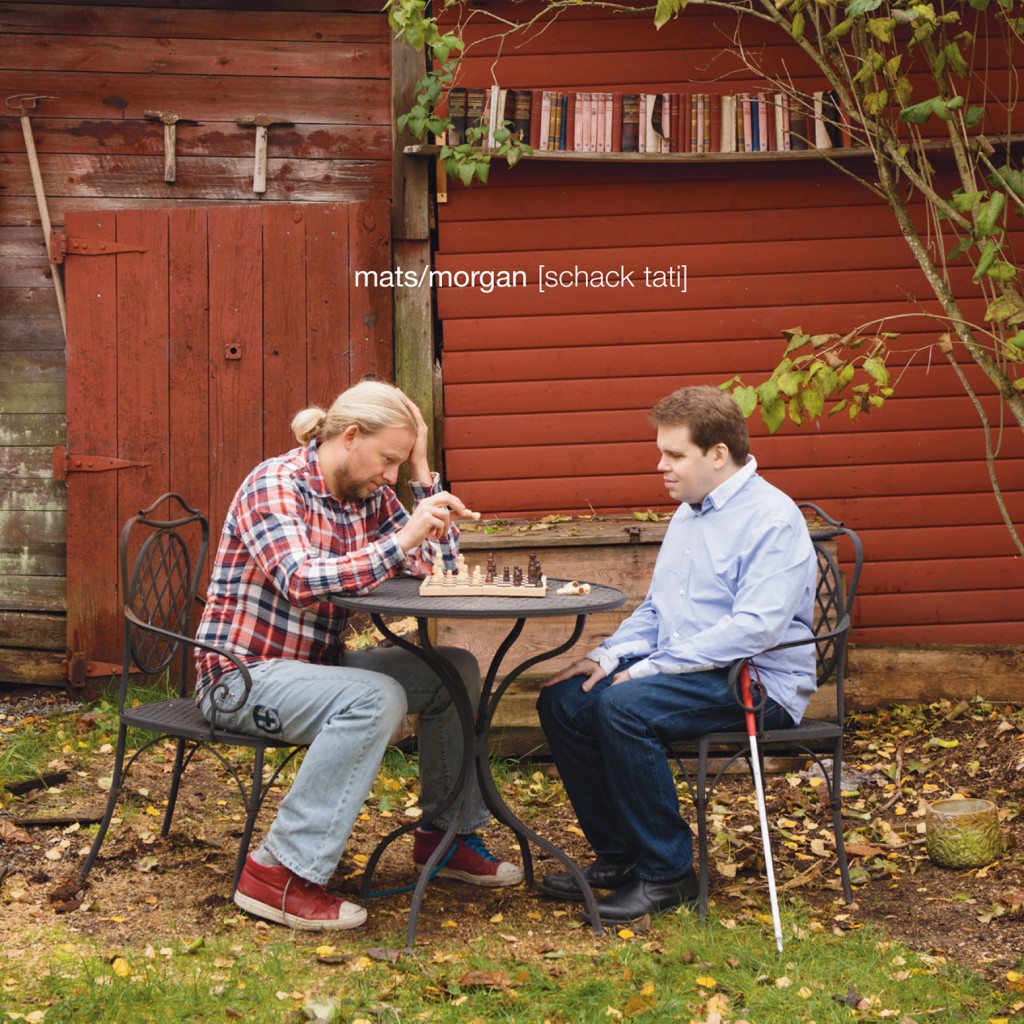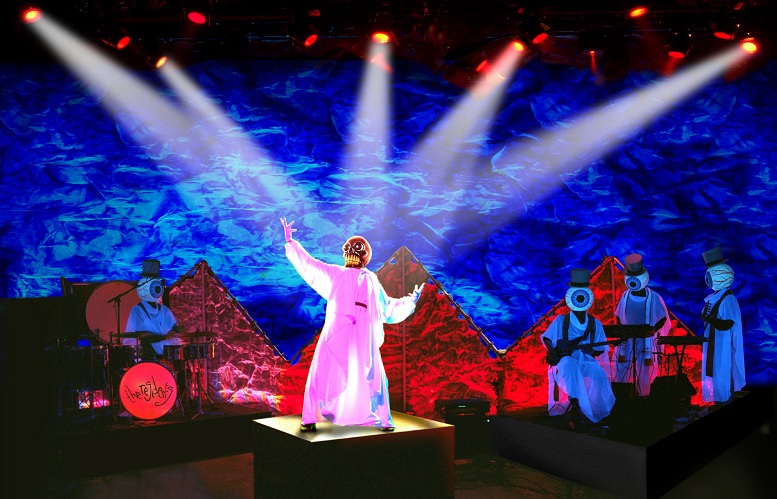PJ Harvey’s The Hope Six Demolition Project at first appears to be the distant and colder cousin of 2011’s anti-war masterpiece Let England Shake. Despite this initial impression, a deeper examination of Harvey’s motivations and approach – along with a comparison of her previous record – reveals more going on under the surface. Continue reading
rock
Echoes and Dust: Interview with Bryan Beller
I got a chance recently to speak with Bryan Beller of The Aristocrats, Joe Satriani and many other cool things. We talk about the upcoming Aristocrats tour, his solo work and touch on Mike Keneally’s Scambot 2.
Check it out here: http://echoesanddust.com/2015/11/interview-bryan-beller-from-the-aristocrats/
The Crux of The Biscuit: Aural Conceptual Continuity in the Music of Frank Zappa
“Project/Object is a term I have used to describe the overall concept of my work in various mediums. Each project (in whatever realm), or interview connected to it, is part of a larger object, for which there is no ‘technical name.’
Think of the connecting material in the Project/Object this way: A novelist invents a character. If the character is a good one, he takes on a life of his own. Why should he get to go to only one party? He could pop up anytime in a future novel.”
“…In the case of the Project/Object, you may find a little poodle over here, a little blow job over there, etc., etc. I am not obsessed by poodles or blow jobs, however; these words (and others of equal insignificance), along with pictorial images and melodic themes, recur throughout the albums, interviews, films, videos (and this book) for no other reason than to unify the ‘collection.’”
– Frank Zappa with Peter Occhiogrosso, The Real Frank Zappa Book
“Like Mandelbrot’s fractals, every Zappa grotesquery springs from some tiny detail in previous work (the celebrated sex yarn ‘Dinah Moe-Humm’ was heralded by a phrase in the sci-fi story inside the booklet that accompanied Uncle Meat).”
– Ben Watson, Frank Zappa: The Complete Guide to His Music
“The official Zappa discography is often an unreliable indicator of chronology; therefore, one cannot necessarily assume that the composition of a given piece is concurrent with its first official release on an album.”
– Brett Clement, A Study of the Instrumental Music of Frank Zappa
tl;dr version: I made an interactive map of Frank Zappa’s conceptual continuity, and you can see it here.
Echoes and Dust: Marco Minnemann Interview/Review #2
Another year, another interview with the multi-instrumentalist Marco Minnemann! You can read the interview at Echoes and Dust here, as well as the subsequent review.
You can also find the links to last year’s discussion and review here.
Echoes and Dust: KoMaRa
My review of KoMaRa’s debut album is now up at Echoes and Dust. Click the link to read, but spoiler alert: I seriously dug this avant-garde beauty. Featuring Pat Mastellotto of King Crimson fame and artwork by Adam Jones of Tool, this was always going to find it’s way into my heart. Also, the other musicians David Kollar and Paolo Raineri messaged me on FB thanking me for the review, and that’s always a nice touch!
February Album Writing In Retrospect
So part of what I spoke of in my update post is completed, with me completing February Album Writing Month (FAWM) for the 4th time. It’s a great way to break through any creative blocks you may be having, and just fun in general (albeit life-consuming fun). You can view all 16 tracks on the link above, but as that page will be wiped by the next February, I thought I’d chuck a few permanent links up for some of my favourite tracks I wrote. And a few vaguely related images to pretty it up a bit!
Meaning in Retrospect: Artificial Trilogies and Bowie’s “Berlin Triptych”
The idea of dividing an artist into periods or eras is a very seductive one – preferring the ‘fusion years’ of Miles Davis over the ‘cool jazz’ of his beginnings, or Frank Zappa’s musique concrete over his more obscenity-riddled pop tunes in his later years. Although this is certainly a legitimate distinction in both examples given above, it is regardless something applied to the artist retrospectively. It’s fairly rare we ever hear the artist talking about their work in such strict, easily distinguished partitions. All the works bleed together; something that arose in one earlier piece of writing or music flourishes in the next and becomes the focus – the creation of a piece of art is far more complex and organic than these simple labels suggest.
Yet what about when these labels are applied by the artist? On the release of 1979’s Lodger, David Bowie announces this album to be the third part of a ‘triptych’ alongside 1977’s Low and “Heroes”. Brian Eno – Bowie’s musical collaborator over all three of these albums – also starts to refer these albums as a trilogy. The Berlin Triptych is born.
Just by calling these albums a collective whole, it definitively changes our experience of them as listeners. A trilogy perhaps even more so. We expect the first part (in this case, Low) to introduce us to ideas that will carry throughout the works, the second part (“Heroes”) to expand and experiment with these ideas, and the third (Lodger) to hark back to the original as well as providing us a sense of closure. A beginning, a middle and an end.
Island – Pictures (1977)
Island were a four-piece avant-garde progressive rock group from Switzerland. They released their debut album Pictures in 1977 and vanished into obscurity, which is an absolute shame, as the album is a relatively unknown classic of the progressive rock area.
One of the key elements that makes Island sound so different right out of the gate is their choice of instrumentation. There is no guitar or bass – the latter role is fulfilled by bass-pedals. Instead, the focus is on percussion, keyboards, vocals and wind instruments (sax, flute and clarinet). That sounds crowded, but there is still a lot of space on the album. Each instrument sounds isolated by itself – on its own island, if you will – yet stills gels with the rest of the band. Over the course of the album’s five tracks, the dark, lonely atmosphere is palpable, conjuring up images of an alien landscape.
In fact, it’s one of the more perfect uses of H.R. Giger for an album cover. The music shifts between worlds, morphing from progressive rock to zeuhl to chamber music to jazz to combining it all together and making the beautiful, yet freakish monster that is this album. This is the music Xenomorphs would create.
“Introduction” certainly does a good job of giving the album’s feel. The track begins with monkish chanting before the clarinet takes over, providing an eerie, yet wistful atmosphere. Whispering vocals creep in, building towards a frenzy alongside the percussion for the pure aural chaos that is the finale. Its one and a half minute duration perfectly encapsulates the creepiness and hints at the prog that we’re about to be treated to over the course of the album.
The 16-minute title track “Pictures” is my personal favourite, running the gamut of all the genres mentioned above, culminating in a truly fascinating, multifarious piece of music. Of particular note are the vocal lines that intertwine and reach beyond Gentle Giant-levels of complexity, as well as a great saxophone solo.
The first 4 minutes of “Herold And King (Dloreh)” are deceptively simple. Brooding, beautiful piano plays before the track erupts, only to implode back in upon itself for some incomprehensible, a cappella craziness, leading to the single greatest non sequitur ever shouted in music:
‘HE ILLUMINATES THE SENATE!’
So it’s not to say the band doesn’t have a sense of humour; I’m not sure I can ever hear the line ‘Gastric! Juices!’ without chuckling.
It’s not an album you can necessarily expect to fully appreciate on the first few listens. These are pieces that reward multiple listens, and the complexity of some of these pieces cannot be understated.
The CD version ends with a 23 minute bonus track titled “Empty Bottles”, which is very different from the rest of Pictures. It’s more in line with the Canterbury scene or jazz fusion, and just shows how capable these musicians were of playing any style of music. It’s a great piece, exploring many different jams, the peak being halfway through the track where we are treated to a surprisingly catchy and uplifting section. It’s very different to what came before, but not unwelcome.
These are some very good musicians playing some very challenging music that defies any single genre. Fans of Univers Zero who want something a little more prog should definitely check this out.
Mats/Morgan – [schack tati] (2014)
This is the first studio album by Mats/Morgan since 2005’s Thanks for Flying With Us. For those not initiated with the singularly unique sound of these skilled Swedes, the brains behind Mats/Morgan are Morgan Ågren (drums) and Mats Öberg (keyboards). Both child prodigies on their respective instruments, the duo became of particular note when Frank Zappa met them while on tour. Suitably impressed at their mastery of his own work, he took them under his wing and acted as a teacher and mentor.
The technically challenging and playful qualities of Zappa’s music have definitely carried over to Mats/Morgan’s own work, but the band certainly aren’t restricting themselves to pure Zappa worship. On their latest release [schack tati], Mats/Morgan delves into old school progressive rock, jazz fusion and dance music to name a few genres. “Dracul of Nancy” is where 8-bit Nintendo music collides with saxophones and polyrhythms, whilst things take a more introspective turn for the mainly keyboard-driven lengthy instrumental “Mr. Piccand”.
Limitless textures and sounds are explored here. You’d expect so much from such a skilled keyboardist (who’s blind, by the way!), but it’s pleasantly surprising to hear so many different styles employed by Ågren. Acoustic and electronic drums are both utilised to their full ability, alongside samples, electronic glitches and a variety of percussion. Pick any two tracks and there’s a different keyboard patch, a different drum sound. These subtle changes add a lot to [schack tati] overall, and that the album still manages to escaping sounding schizophrenic is admirable.
If fact, the incorporation of the aforementioned glitches into their already expansive palette of rhythms leads to some of the best parts of the album, the heavily electronic “Walk Here” and the much jazzier and frenzied “Rappel”.
However, the stand-out track has to be the album opener “Rubber Sky”. Keyboards dance around the simple yet killer groove set in place by Ågren (playing drums, guitar and bass). The groove drops away completely for some of the only vocals on the album – sung by Morgan’s son, Alvin Ågren. The childish (literally) vocals add that playful, undeniably Zappa-esque quality to the music, particularly when juxtaposed with the heavy bass and guitar grooves. “Rubber Sky” rocks hard, fitting a lot into its three minute runtime without sounding like it’s doing so. Part of me laments that the track isn’t particularly indicative of [schack tati] as a whole, as I’d love to hear more music in this vein.
To their credit, no track overstays its welcome. Mats/Morgan manage to fit their unique brand of experimental instrumental music into short nuggets of gold – most of the 12 tracks sit comfortably between 2 and 4 minutes. Everything is honed down to a fine art, so not surprising it was 9 years between albums. Hopefully we don’t have to wait another 9 years for another, but if it’s generating music of this quality I certainly won’t mind too much.
The Residents – Part Two
The second and final installment on my overview of The Residents work. If you’ve not read it yet, check out part one.
Oh…1990s Residents. This is where we see concept overreach musical execution. It’s a shame, as we end up with some of the most interesting ideas being explored over these albums, and the band embracing the new MIDI technology is certainly admirable. They also embraced video gaming in a big way, and over the course of three albums (starting with 1991’s Freak Show and ending with 1996’s Have a Bad Day) created several ambitious multimedia pieces that are hard to separate from their interactive counterpart. The only one that properly approaches a standard game would be Bad Day on the Midway – for which Have a Bad Day is the soundtrack. I’ve played it several times (it’s a timed game so you have to play several times to discover the stories for all the different characters) and thoroughly enjoyed it, but separating the music from the game unfortunately severely impacts it. This is really noticeable for me when I listen to 1994’s The Gingerbread Man, as I’ve not played the game. Given the music involves reinterpretation of the same motif over and over again, it can get a little grating and even boring. I only wonder what it would be like to engage with the entire work.

